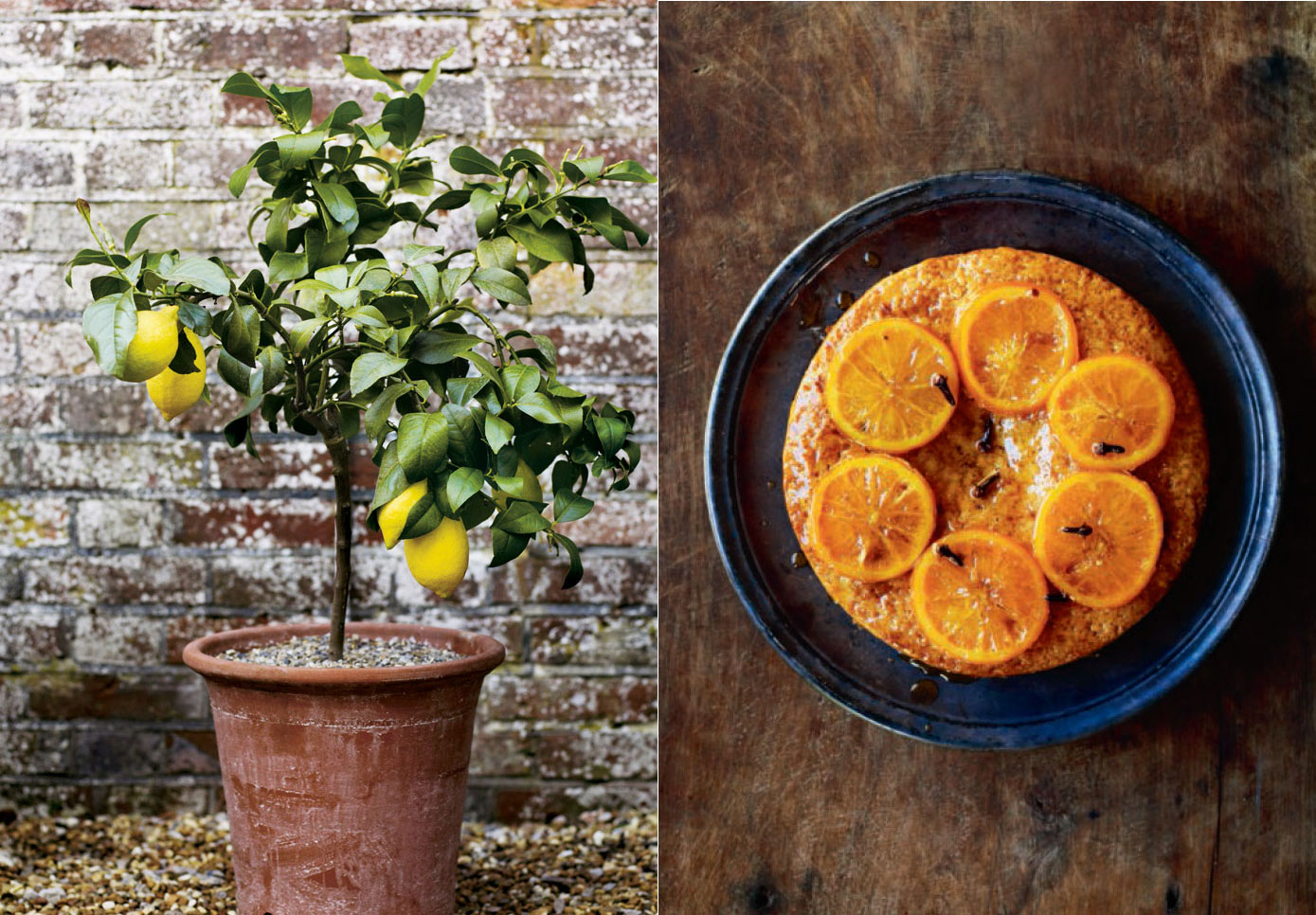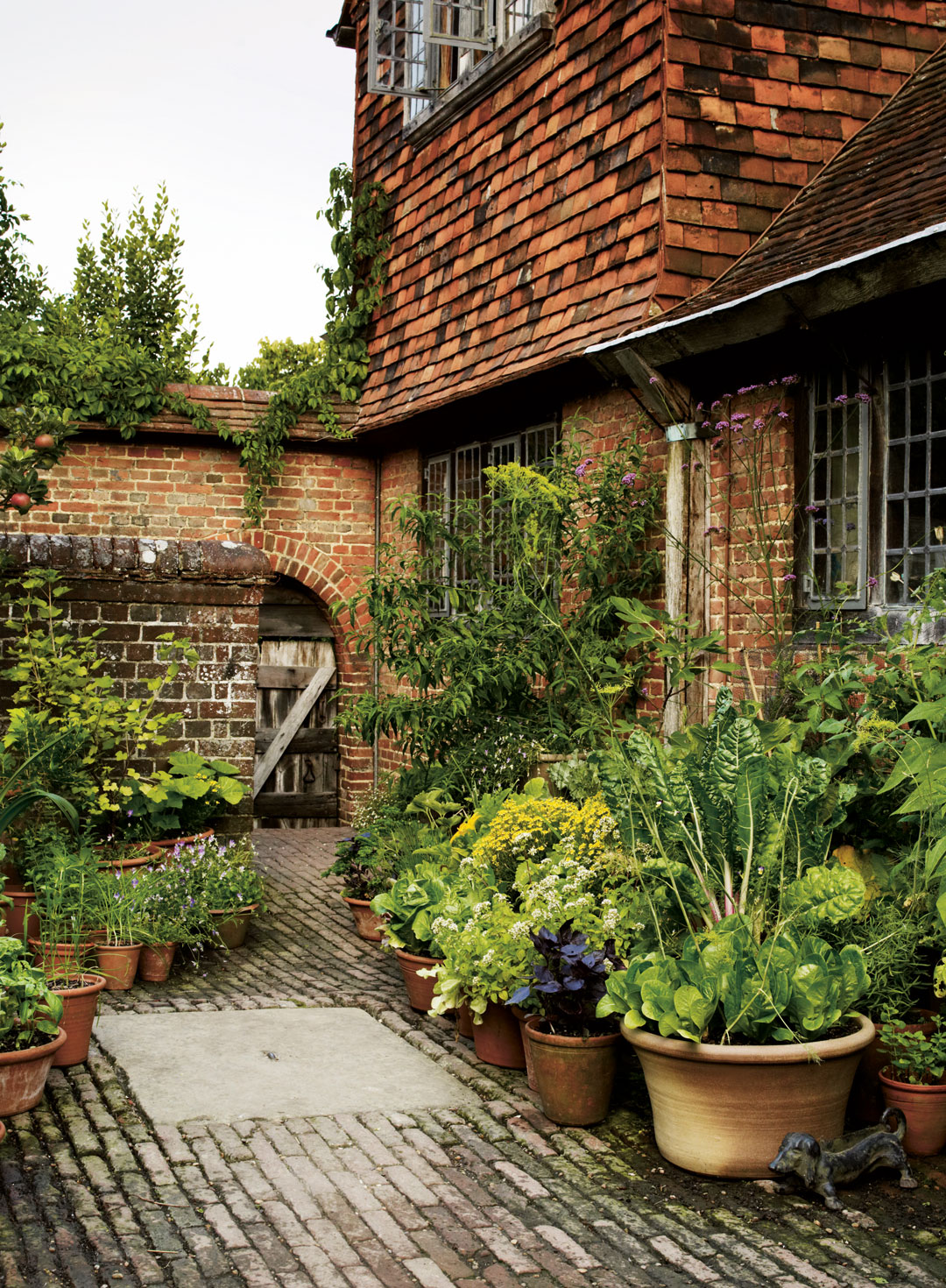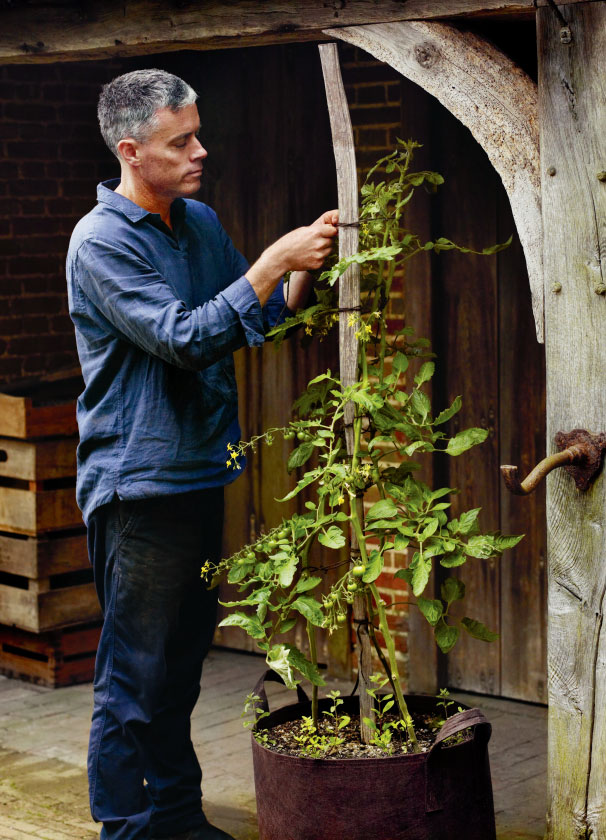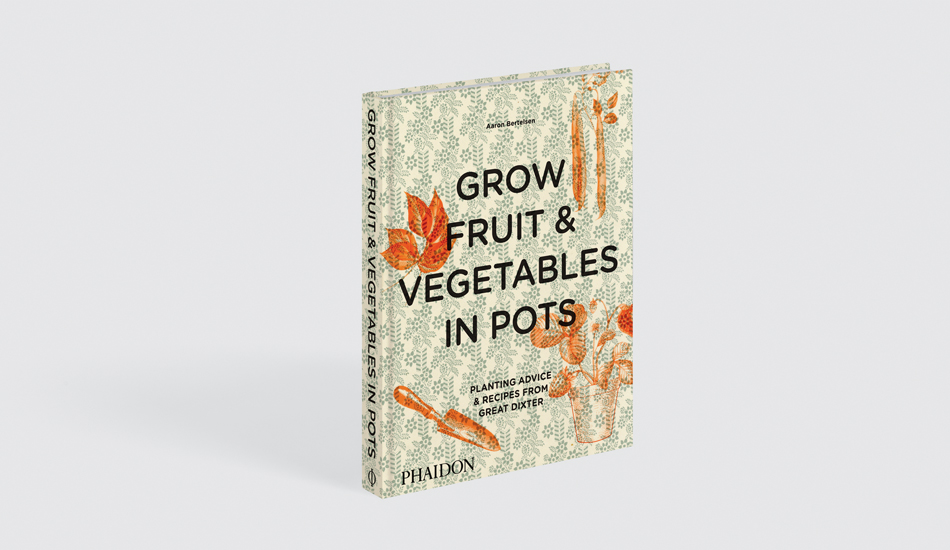
From Pot to Plate: How to Grow and Cook Lemons
You don't actually need a garden to grow beautiful and tasty fruit and vegetables says Great Dixter’s Aaron Bertelsen
In terms of latitude, Great Dixter, the beautiful English country house and gardens, is pretty northerly, closer in climes to Newfoundland than Naples. Nevertheless, its gardener and cook, Aaron Bertelsen, can still conjure some fairly sun-hungry crops out his plot of land.
If you’ve visited this wonderful, architecturally significant place, a couple of hours south of London, you may well have admired Bertelsen’s fruit and vegetable beds which lie close to the house, or enjoyed some of his harvest in Great Dixter’s café – or Refreshment Loggia, as it is known on site.

However, you may not have come across Bertelsen’s kitchen courtyard garden. This brick-floored patch immediately beside the kitchen began on a bit of whim, but now is home to a wide variety of plants. Some, such as carrots and kale, would fare perfectly well in an open field; others, however, benefit from the sheltered microclimate directly outside Bertelsen’s door. As he explains in his new book, Grow Fruit & Vegetables in Pots, a well-placed earthenware container, a warm-ish porch, and perhaps a little hessian or bubble wrap to keep off the frost might be all British lemon growers will need to save their plants from winter’s worst effects.
“In a temperate climate such as the UK’s, and if you are growing in a sheltered spot, it may be enough to protect them in situ,” he writes. “But if you are in a country with colder winters, you really will have to find a place to keep them inside – a conservatory, porch or even a cool room will dramatically increase the chances of survival.”

Bertelsen also advises against being too heavy handed with the watering can. “Lemon trees like to dry out between waterings, so water them thoroughly once a week,” he writes. “I do mine every Tuesday.” You might also encounter scale insects, or tiny parasitic bugs, on your plant, though the gardener has a solution for this too. “A wipe with whisky seems to work wonders too, but don’t use your finest single malt – the cheap stuff works just as well.”
Once the fruit is ready to harvest, Bertselsen likes to switch bottles. “There is nothing like a gin and tonic flavoured with a lemon that you grew yourself,” he writes. “I promise you, it really does taste better.”
For a more temperate use of lemons, try Bertelsen’s Tunisian lemon and orange cake. For this you’ll need 2 1/2 tablespoons fresh white breadcrumbs; 100 g/3 1/2 oz (1 cup) ground almonds (almond meal); 200 g/7 oz (1 cup) caster (superfine) sugar; 1 1/2 teaspoons baking powder; 200 ml/7 fl oz (scant 1 cup) of sunflower oil, plus extra for greasing; 4 eggs; the grated zest of 1 orange and the grated zest of 1 lemon; as well as candied orange slices, to decorate.

For the accompanying syrup you’ll require 100 g/ 3 1/2 oz (1/2 cup) caster (superfine) sugar; the juice of 1 orange and 2 lemons; 4 cloves and a small cinnamon stick.
Begin by greasing and then double-line the bottom and sides of a 20-cm/8-inch loose-bottom round cake pan with baking (parchment) paper. Mix the breadcrumbs, almonds, sugar and baking powder together in a large bowl. Stir in the oil then the eggs. Add the orange and lemon zest and mix well. Pour the batter into the prepared pan and place in a cold oven. Turn the oven on to 190 degrees C/375 degrees F/Gas Mark 5 and bake for 50 minutes, or until the cake is a rich brown on top and a skewer inserted into the centre comes out clean. Let cool in the pan for 5 minutes.
Meanwhile, make the syrup. Put all the ingredients into a pan and bring them gently to a boil, stirring until the sugar has dissolved. Reduce the heat and simmer until the mixture has reduced by half (to about 5 tablespoons) and is thick and syrupy. Remove and discard the cinnamon stick. Run a thin round-bladed (blunt) knife around the edge of the still-warm cake, remove the cake from the pan and carefully peel away the baking (parchment) paper from the sides and bottom. Place the cake on a plate. Use a skewer to pierce holes over the surface of the cake, then pour the syrup over the cake and let stand until the syrup has all soaked in. Decorate with the candied orange slices. Once the cake is cool, loosely cover with clingfilm (plastic wrap) and place in the refrigerator overnight before serving.

There, you’ve gone right from pot to plate. For a more detailed version of this recipe, as well more lemon growing tips and much more besides, order a copy of Grow Fruit & Vegetables in Pots.